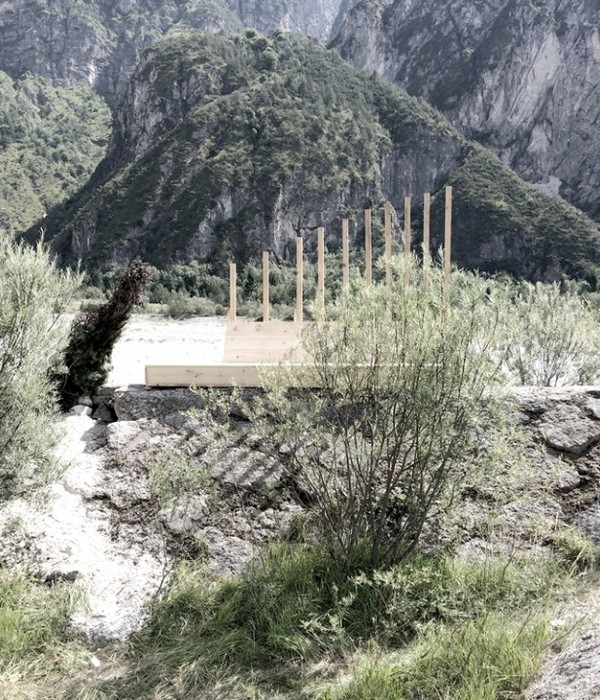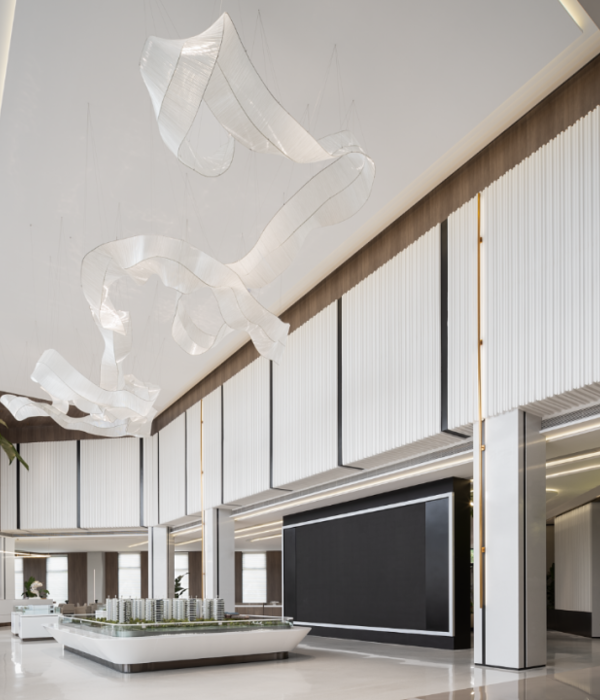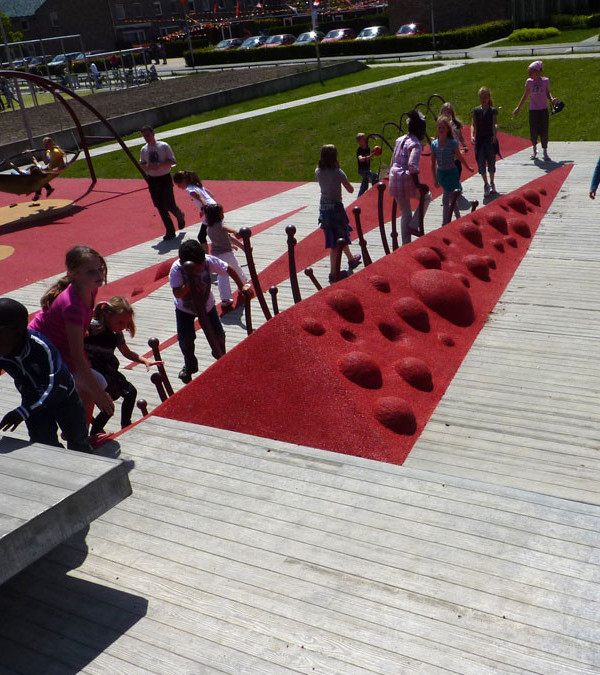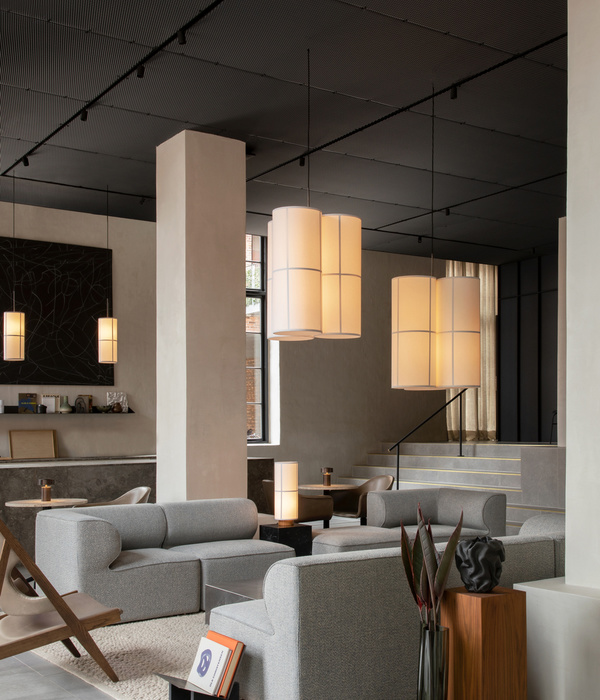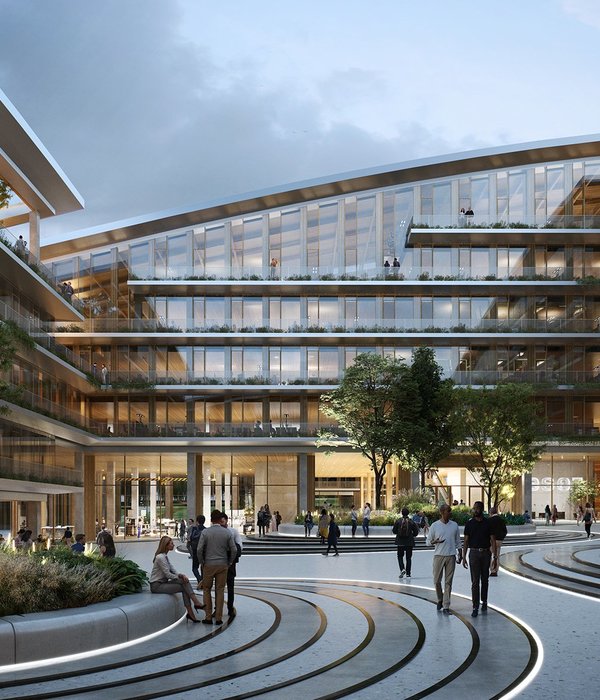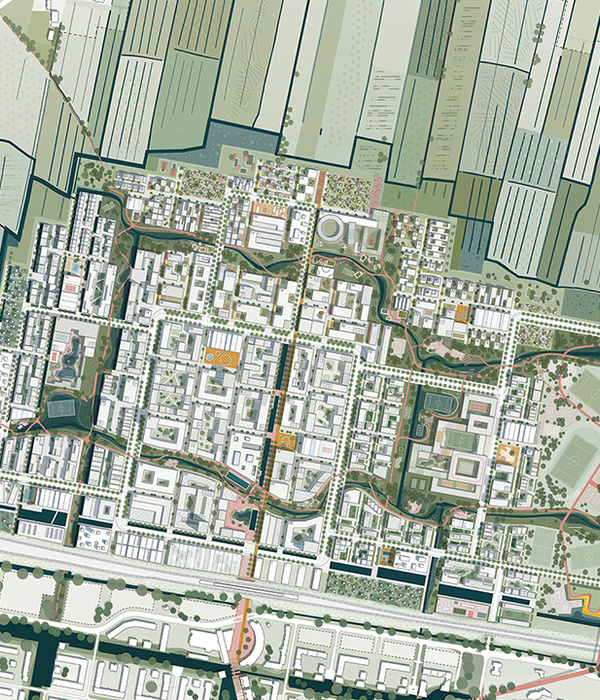2012年12月,巨大的浪潮袭击了加拿大英属哥伦比亚的海岸线,造成了巨大的破坏,而业主夫妇位于温哥华的海岸住宅也未能幸免于难-巨浪掏空了堤岸,残留的露台悬浮于空中,摇摇欲坠。不胜枚举的过往案例已经证实了钢筋混凝土结构的防浪堤在海水的腐蚀下将变得不堪一击,为了避免重蹈覆辙,景观设计团队视本次委托为一个突破陈规,打造温哥华独树一帜海岸景观的机会。他们与海洋工程师合作,以打造一个在海岸景观质量的同时能够稳定堤岸结构的设计。耐腐蚀钢板凹凸起伏,如同Saturna海岛上的砂岩岸线,而在其下,喷浆混凝土固定了松散的泥土和岩石。延绵的钢墙仿佛一件实用的艺术品,而散布于海滩上的巨石则削弱着海浪的力量,为各类生物创造一个容身之所。
In December 2012, a huge wave struck the coastline of British Columbia, Canada, causing huge damage, and the coastal residences of the owners and couples in Vancouver were not spared – huge waves emptied their banks, leaving the remaining terraces hanging in the air and crumbling. Numerous past cases have confirmed that the reinforced concrete breakwater will become vulnerable to seawater corrosion. in order to avoid repeating the same mistake, the landscape design team regards this entrustment as an opportunity to break through the old conventions and create Vancouver’s unique coastal landscape. They worked with marine engineers to create a design that can stabilize the bank structure while maintaining the quality of coastal landscape. The corrosion-resistant steel plate is concavo-convex like the sandstone coastline on Saturn island, and under it, shotcrete fixes loose soil and rock. The continuous steel wall is like a practical work of art, while the boulders scattered on the beach weaken the power of the waves and create a shelter for all kinds of creatures.
项目的具体操作过程被分为了三步:首先,景观团队与环境顾问团队、海洋与渔业部门、温哥华港口管理部门等哥政府机关开展了广泛的合作和审批过程。有序排列于海滩上的巨石阻挡着海浪,促进海沙的自然沉淀和动植物繁殖地的形成。紧接着的便是耐腐蚀钢墙的具体设计和安装。在初始方案中钢墙仅有120英尺长,然而在目睹了基地临侧的损毁堤岸并征得其主人的首肯后,钢墙被增至200英尺长,同时保护着两户人家,而其形态也产生了更丰富的变化,从西侧的“砂岩”过渡至东侧的“甲壳动物”。
The specific operation process of the project was divided into three steps: first, the landscape team carried out extensive cooperation and approval processes with the environmental consultant team, the marine and fishery department, the Vancouver port management department and other Colombian government agencies. Boulders arranged orderly on the beach block the waves and promote the natural sedimentation of sea sand and the formation of breeding grounds for animals and plants. Followed by the concrete design and installation of corrosion-resistant steel walls. In the initial plan, the steel wall was only 120 feet long. however, after seeing the damaged bank near the base and obtaining the approval of its owner, the steel wall was increased to 200 feet long and protected two families at the same time. the shape of the steel wall also changed a lot, from the ” sandstone” on the west side to the ” crustacean” on the east side.
设计团队创建了钢墙的实体和电脑模型,并引入了水射流切割机以减少材料的浪费。反复的模型探讨简化了墙面的复杂形态,也让其成本降至与混凝土墙的花费不相上下。潮位的不断变化使可施工的时间十分有限,在工厂预制、组装完成后的20余件墙体结构被运送至场地,以完成最终的组装。其下的喷浆混凝土以相同的形态被固定在泥土之上,以保证在未来钢墙脱落后海岸整体造型的统一和美观。
The design team created solid and computer models of steel walls and introduced water jet cutting machines to reduce material waste. Repeated model discussions have simplified the complex shape of the wall surface and reduced its cost to the same level as that of the concrete wall. The continuous change of tide level makes the construction time very limited. after prefabrication and assembly in the factory, more than 20 wall structures are transported to the site to complete the final assembly. The sprayed concrete under it is fixed on the soil in the same form to ensure the unity and beauty of the overall shape of the coast after the steel wall falls off in the future.
项目落成之后吸引了大量的公共参与者,划艇、太阳浴、抑或漫步闲逛,让海滩热闹非凡。沙丘草日益繁盛,而海沙也慢慢被固定和沉积,而这一切都不可能发生在混凝土防浪堤前,饱受海浪摧残的沙滩之上。设计完美地契合了业主的需求,在保护其住宅花园不受自然侵扰的同时,创造了一道美丽的风景线。曾经摇摇欲坠的堤岸不见踪影,而全新的岸线将活跃的公共生活引入了海岸,模糊了公私领域的界限。Paul Sangha Landscape Architecture的首次尝试成为温哥华海岸线上的一个亮点,如同一个实用而触手可及的艺术品,为温哥华延绵的海岸带来独特的身份象征。
After the completion of the project, it attracted a large number of public participants, rowing boats, sun baths, or strolling around, making the beach very lively. Sand dunes and grass are flourishing day by day, and sea sand is slowly fixed and deposited. all this cannot happen in front of the concrete breakwater and on the beach battered by waves. The design perfectly meets the needs of the owners and creates a beautiful scenery line while protecting their residential gardens from natural intrusion. The once crumbling bank is missing, and the new coastline has brought active public life to the coast, blurring the boundaries between the public and private sectors. Paul sangha landscape architecture’s first attempt has become a bright spot on Vancouver’s coastline. like a practical and accessible artwork, it brings unique identity symbols to Vancouver’s extended coast.
{{item.text_origin}}


